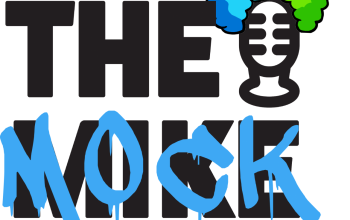Find out what they can and can’t do for you
Emily Barber STAFF REPORTER
Photo: Student Life / U of T.
The extensive mental health initiatives at the University of Toronto (U of T), both physical and digital, strive to be as comprehensive and inclusive as possible. Mental health is becoming an increasingly prioritized issue, and as University of Toronto St. George (UTSG) students and staff return from the recently installed fall reading week, it seems evident that students’ mental health is now being taken more seriously.
A look at the University of Toronto Mississauga (UTM) website confirms this train of thought, as fall reading week is viewed as a chance to “give each student the opportunity to schedule other learning activities in that week that could help their academic success. In addition, some students might choose to spend the fall break getting to know their fellow classmates, arranging social activities or visiting family. All such activities should ease the stress associated with first term and, for new students, the significant transition to university life.” But beyond a new reading week, what else is being done to ensure the mental well-being of those at U of T?
The latest online Mental Health Platform (released in 2016) promises to focus on developing a communication strategy that keeps students up-to-date on all programs and services available and how and when to access them. Not only is there involvement within the university, but attempts at communication beyond the university, including a “web-based platform called More Feet on the Ground [that] was launched in partnership with the Council of Ontario Universities to address student mental health education, awareness and stigma,” and the “launch of the new healthyuoft.ca website provides links to campus programs, resources and events in support of student mental health. The HealthyUofT site is supported via Twitter (53,000 students reached) and Facebook (130,000 views).”
Within U of T itself, a communication strategy has developed, the Flourish program at the University of Toronto Scarborough has expanded, in which “students can take a comprehensive assessment of their mental health that identifies signs and symptoms of mental health, character strengths, academic engagement and well-being. They are provided with customized feedback and resources concerning their mental health.” More than 2,000 UTSC students have completed the online Flourish assessment.
At St. George, mental health messaging has been promoted weekly to students at the St. George campus via “inclusion in the campus-wide just-in-time slide program and the 9 New Things e-newsletter. Messaging about mental health supports and services reached approximately 60,000 students per week.” In the new Health and Wellness Centre at the Koffler Centre located on the second floor, new signage has been installed to direct students toward help more quickly and efficiently.
The second tier of the mental health initiative plan is to expand strength-based programming to develop positive mental health and resilience that “engages students early in order to prevent exacerbation of the problem.”
There also is increased awareness on an emphasis to develop the mental health-related literacy of students, staff, and faculty to create supportive and inclusive conditions for students to flourish and to reduce the stigma associated with mental health issues.
After implementing programs, the goal is to coordinate, benchmark, and assess the “effectiveness of programs and initiatives to ensure they are accessible, sustainable and cohesive.”
The mental health initiative also aims to go beyond the U of T community, to further leverage external community resources to help meet the full spectrum of health needs of the students and enhance coordination, collaboration, and communication across services and systems within and beyond the university.
Another helpful resource is the Gerstein Crisis Centre, a community centre for serious mental health concerns. The centre has two locations at 1045 Bloor Street West and 100 Charles Street East, it promises numerous care facilities, including “24 hour telephone crisis intervention, mobile crisis visits and short term residential beds,” and services that include “integrated services for individuals with complex needs which can include mental health and justice, concurrent and serious substance use, homelessness and dual diagnosis.” The centre has a comprehensive website that lists all of its available resources, as well as hotlines for both immediate and long-term needs.
The Koffler Health and Wellness Centre, located on the second floor of 214 College Street, provides the same services as a family physician for all current U of T students, as well as psychotherapy, pharmacotherapy, group therapy, and embedded counsellors in locations across campus. The Koffler Health and Wellness Centre offers both drop-in appointments and scheduled appointments, however, they recommend scheduling appoinments as they only provide a certain amount of drop-ins per day and wait time can range from 15 to
These services are here for students, and so it is important to utilize them when needed. The phone number Gerstein Crisis Centre 24 hour crisis intervention hotline is 416-929-5200. They can also be reach by email at [email protected] (Charles St. location) or at [email protected] (Bloor St. location). The Koffler Health and Wellness Centre can be contacted at 416-978-8030 daily from 9 am to 4:30 am. For mental health services, email mentalhealth.utoronto.ca.
Other Community resources/hotlines include:
Good2Talk Helpline: 1-866-925-5454
Assaulted Women’s Helpline: 416-863-0511
Toronto Distress Centre: 416-408-4357
Drug and Alcohol Helpline: 1-800-565-8603
Mental Health Helpline: 1-866-531-2600
Ontario Problem Gambling Helpline: 1-888-230-3505




